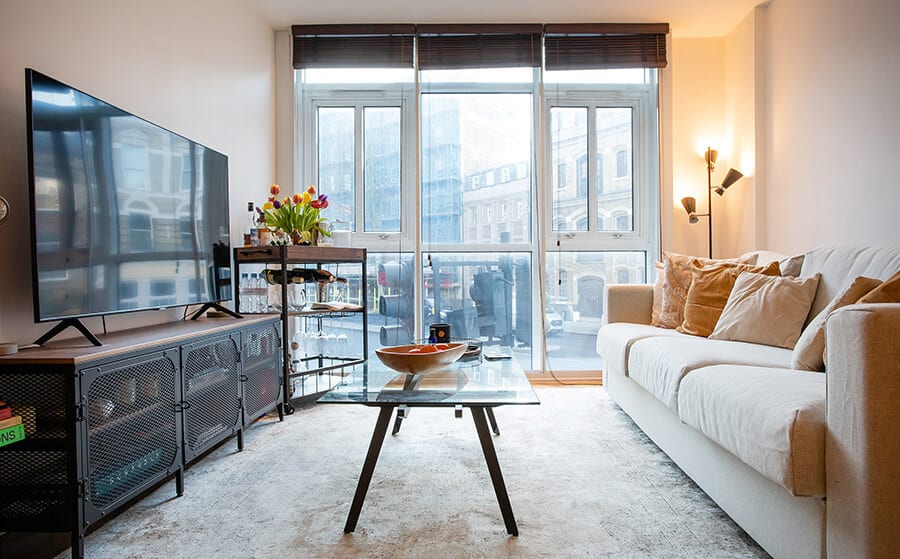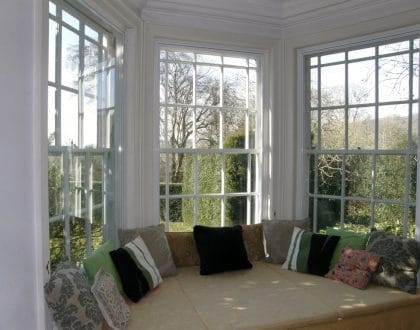Retaining Character, Reducing Costs: Secondary Glazing for Heritage Properties

When it comes to maintaining a period property, there’s always a fine line to walk between preserving its historical charm and improving its energy efficiency. As energy bills continue to rise across the UK — with the energy regulator Ofgem confirming a 6.4% price cap increase from April 2025 — many homeowners are looking for ways to enhance their homes while retaining their original character.
One solution that is gaining popularity is secondary glazing — a highly effective and sustainable way to increase comfort, reduce energy consumption, and protect the heritage of your home.
If you’re living in a traditional property with original timber or metal windows, you may be weighing the options: should you repair or replace them? In this post, we will explore how you can enhance the performance of your windows while preserving their visual appeal.
Benefits of Repairing Your Existing Windows
For those with heritage properties, the first step should always be to repair original windows before considering any upgrades. Many Georgian and Victorian windows are still in place today and have stood the test of time. In contrast, modern softwood windows often need replacing after just 20 years.
Opting to repair your windows, rather than replace them, not only saves money but also ensures the preservation of your property’s character and historical significance. If your property is listed, replacing windows entirely may require Listed Building Consent, making repairs the more sensible and legally compliant option.
Before undertaking any upgrades, such as draught-proofing or adding secondary glazing, it’s essential to assess the condition of your existing windows. Regular maintenance, including cleaning, painting, and repairing minor damage, will help keep them functioning well for longer. By opting for repairs, you can maintain the unique charm of your home while improving its functionality.
Secondary Glazing vs. Double Glazing: What’s Best for Your Home?
When considering ways to improve your home’s energy efficiency, double glazing is often the first solution that comes to mind. Double-glazed windows, consisting of two panes of glass with an air gap in between, are well known for their thermal insulation and noise reduction properties. However, when it comes to period properties, replacing original windows with double glazing can be problematic.
Modern double-glazed units are typically much flatter than traditional windows, and the thicker timber sections and glazing bars they require can alter the original aesthetic of your home. In heritage buildings, it’s generally better to preserve the original windows rather than replace them with new ones.
This is where secondary glazing comes in. Secondary glazing is an additional layer of glazing installed on the inside of your existing windows. It provides similar — and often superior — thermal and acoustic benefits to double glazing without altering the appearance or structure of your original windows.
With its larger gap between panes, secondary glazing not only improves the comfort of your home by keeping heat in during winter, but it also helps to reduce your heating bills and lower energy consumption and carbon emissions. Additionally, secondary glazing provides exceptional sound insulation, making it ideal for homes located near busy streets or in noisy areas.
Draught-Proofing: The First Step to Improved Efficiency
Before considering secondary glazing, draught-proofing should be the first step to improve the energy efficiency of your windows. Older windows, particularly those in period properties, are often a significant source of heat loss due to gaps and cracks around the frames. Draught-proofing seals these gaps, reducing air infiltration and improving your home’s thermal performance.
However, draught-proofing alone may not provide sufficient insulation for older or more poorly maintained windows. If your windows have large gaps or are difficult to seal, secondary glazing becomes an excellent solution. It provides a much higher level of thermal insulation than draught-proofing alone.
Sustainable Choice for Your Home
Repairing and upgrading your windows with secondary glazing is not only an effective way to improve energy efficiency, but it is also a more sustainable option. By keeping your existing windows, you preserve the embodied carbon in these materials — carbon that would be lost if you replaced them with new windows. Secondary glazing is a greener alternative to full window replacement, as it reduces the need for new materials and cuts down on waste.
Furthermore, secondary glazing has a long lifespan, often exceeding that of modern replacement windows. This means fewer resources are required for future replacements, further contributing to your property’s sustainability.
Conclusion
When it comes to upgrading the windows in your heritage property, repairing and enhancing your existing windows with secondary glazing is the best option for preserving your home’s character and charm while significantly improving its energy efficiency. Draught-proofing should be your first step to reduce heat loss, but for long-term comfort, secondary glazing offers superior insulation and noise reduction, all without compromising your home’s aesthetic.
Recommended Posts

Top Tips For Soundproofing Your Bedroom
08/07/2025


